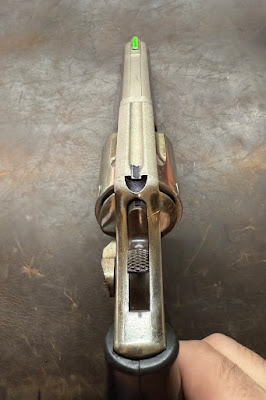Today I took a couple wheelguns to the range and spent most of my time smacking the 25 yard plate rack.
The guns are a 2.75" Ruger Speed Six in .357 Magnum and a 4" Smith & Wesson Model 64-3 in .38 Special. All the ammo I shot today were my own .38 reloads with Speer 158 grain LSWCs in mixed brass, Servicio Aventuras primers, and Bullseye powder. 100 rounds had 3.3 grains of Bullseye while the other hundred had a more typical 3.5 grains.
With 3.5 grains of Bullseye, a 4" .38 will push a 158 grain bullet to about 775 FPS average, duplicating typical non-plus P performance. It's accurate and very pleasant to shoot in a service sized revolver.
I was also pleased to see that the two other people on the range while I was there were a couple fellow Members of the Tribe. It's always good to see fellow Jews exercising their Second Amendment right to keep and bear arms. One guy was instructing the other. They had some kind of semiatuomatic 9mm with a red dot sight, and learning defensive shooting.
My free PDF book for Jews looking to arm themselves is available from my Google Drive, Guns for Jews v5.0.
(How'd I know they were Jewish? Well, the kippah was the big giveaway. But a lot of us have Jewdar, too. ;) )














